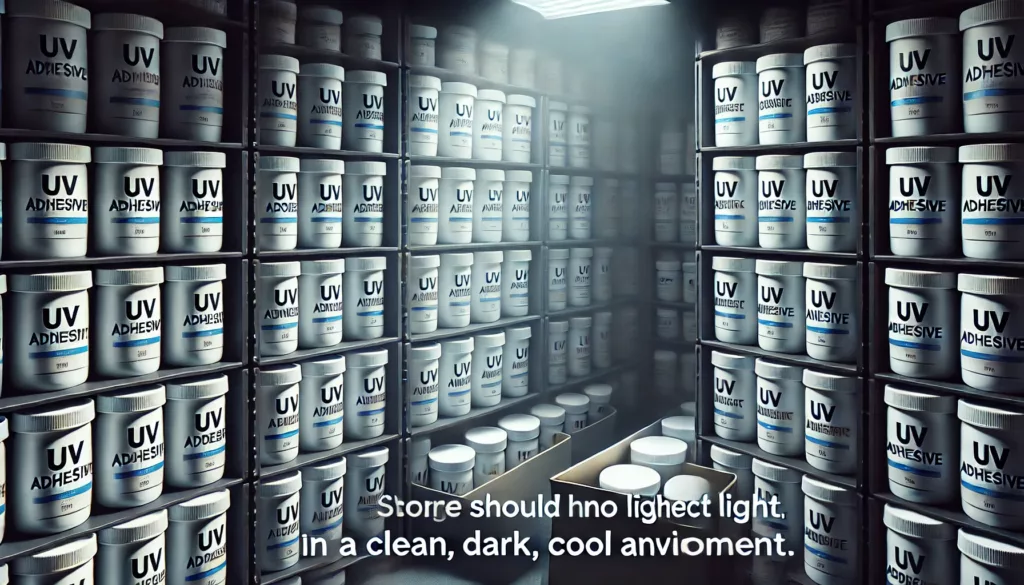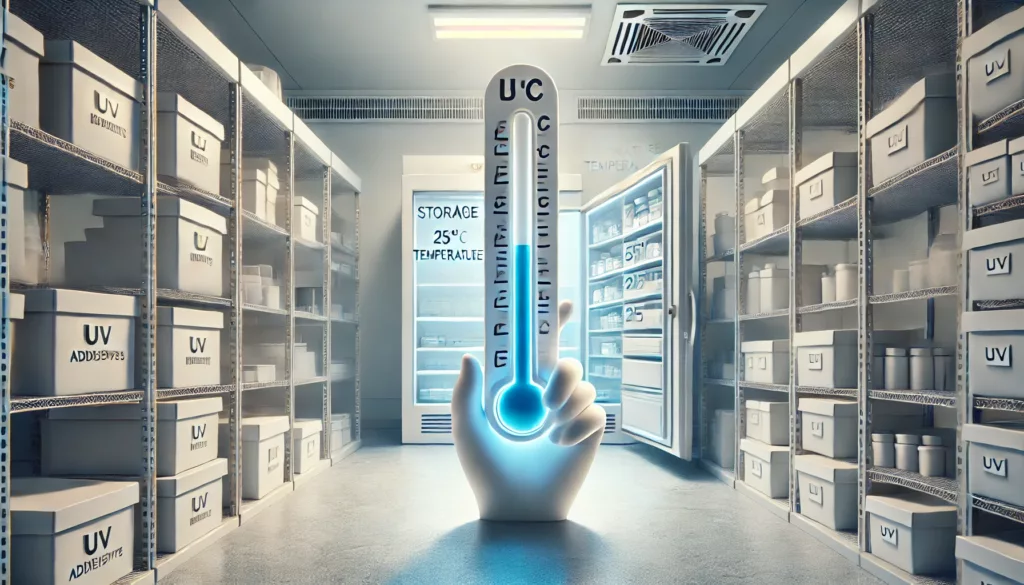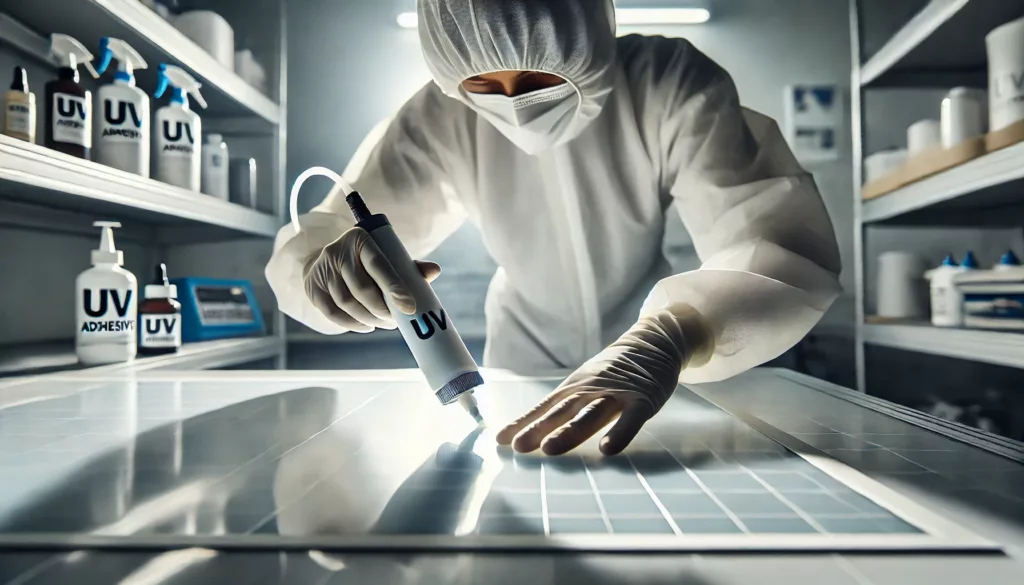UV adhesives are widely used in industries ranging from electronics to automotive and medical devices. These adhesives offer several benefits, such as fast curing times and strong bonding capabilities. However, to ensure that UV adhesives perform at their best, proper storage and maintenance are essential. Many people overlook the fact that the conditions under which UV adhesives are stored can drastically impact their shelf life and curing efficiency. This article will explore best practices for storing and maintaining UV adhesives, including common mistakes to avoid and expert tips to keep them in top condition.

The Importance of Proper Storage for UV Adhesives
UV adhesives, unlike many other adhesives, rely on ultraviolet (UV) light for curing. This means that exposure to light, particularly UV light, can activate the adhesive prematurely, reducing its effectiveness. The primary reason for proper storage is to protect the adhesive from this light exposure. Besides, the right temperature, humidity, and storage containers also play a significant role in preserving the chemical properties and functionality of the adhesive.
If UV adhesives are not stored correctly, they can undergo chemical degradation, leading to reduced shelf life and inconsistent performance. Storing adhesives under the wrong conditions may cause them to become too viscous or too runny, preventing them from bonding effectively. Therefore, careful consideration of storage factors is crucial for businesses and DIY users alike.
How to Store UV Adhesives Effectively

To maximize the performance and shelf life of UV adhesives, follow these basic guidelines for storage:
- Keep UV Adhesives in Opaque Containers
UV adhesives are particularly vulnerable to light, especially UV light, which can cause them to cure prematurely. Always store UV adhesives in opaque containers that block light. Clear or transparent containers may expose the adhesive to sunlight or artificial light, reducing its effectiveness. - Store in a Cool, Dry Place
UV adhesives should be stored in a cool, dry environment to prevent them from being exposed to extreme temperatures or moisture. High heat can cause the adhesive to become overly viscous, while moisture can introduce contaminants that compromise bonding strength. - Avoid Freezing
While it is essential to store adhesives in a cool location, avoid freezing them. Freezing temperatures can alter the chemical structure of the adhesive, rendering it ineffective. A temperature range between 5°C and 25°C (41°F to 77°F) is generally ideal for most UV adhesives. - Seal Containers Properly
Ensure that containers are tightly sealed to prevent exposure to air. Oxygen can degrade certain components in the adhesive, causing it to cure prematurely. Additionally, storing UV adhesives in airtight containers can prevent contamination from dust or other particles. - Minimize Exposure to Air
When using UV adhesives, try to avoid prolonged exposure to the open air. After applying the adhesive, immediately reseal the container. This helps to maintain the adhesive’s quality and prevents it from curing due to accidental UV exposure.
How Long Do UV Adhesives Last?

UV adhesives typically have a shelf life that ranges from 6 months to 1 year, depending on the type of adhesive and its formulation. Factors that influence the shelf life include:
- The quality of the adhesive: Higher-end UV adhesives tend to have a longer shelf life due to better formulation and packaging.
- Storage conditions: As mentioned earlier, exposure to heat, light, and moisture can drastically shorten the lifespan of UV adhesives.
- Seal integrity: If a UV adhesive container is compromised and air or moisture seeps in, the adhesive may cure or degrade prematurely.
To get the best out of your adhesives, always check the manufacturer’s recommended shelf life and inspect the product periodically for changes in viscosity, color, or texture.
Maintenance of UV Adhesives

Maintaining UV adhesives is just as important as storing them properly. Here are a few tips for keeping your adhesives in top working condition:
- Keep the Adhesive Well-Mixed
UV adhesives, especially the ones with high viscosity, can separate over time. It’s important to give the adhesive a good shake or stir before use to ensure uniformity. Some adhesives may even require mixing with a special tool, as air bubbles can develop if they are left undisturbed. - Avoid Contamination
Always ensure that the adhesive is not contaminated by foreign substances like dust, dirt, or moisture. Use clean tools when applying the adhesive, and keep the containers tightly sealed when not in use. If contamination occurs, the adhesive may not bond correctly, which could compromise the integrity of the project. - Perform Regular Quality Checks
Regularly check the viscosity and consistency of the UV adhesive. If the adhesive becomes too thick or clumpy, it may have started to cure due to improper storage conditions. In such cases, it’s advisable to discard the adhesive to avoid poor-quality bonding. - Use the Expiration Date
The expiration date listed on the packaging is not just a suggestion—it’s the date after which the manufacturer can no longer guarantee optimal performance. Always use adhesives within the recommended period to ensure that your bonds are strong and reliable.
Common Mistakes to Avoid When Storing UV Adhesives

While storing UV adhesives may seem straightforward, several common mistakes can lead to degraded adhesive performance:
- Storing in Direct Light
Exposing UV adhesives to light is one of the most common mistakes. Even small amounts of light can activate the adhesive and reduce its effectiveness. Always ensure your storage containers block light completely. - Using Old Adhesive Past Its Shelf Life
Using expired adhesives may result in weak bonding and premature curing. Always check the expiry dates and do not use products that are beyond their shelf life. - Storing in Inconsistent Temperatures
Avoid moving adhesives between hot and cold environments, as this can cause condensation inside the container, which compromises the adhesive’s properties.
What to Do When UV Adhesive Shows Signs of Degradation?
If a UV adhesive shows signs of degradation such as change in color, viscosity, or curing issues, it’s best not to use it for critical applications. However, if you catch these signs early, you may be able to rescue the adhesive:
- Check for Exposure to Light
If you suspect light exposure, remove the adhesive from its light source and store it in a completely dark, sealed container. - Test on a Sample Surface
Before using degraded adhesive on a final project, test it on a scrap piece to ensure it still performs as expected. - Consult the Manufacturer
If you’re unsure about whether your adhesive is still usable, contact the manufacturer for advice. They may have specific guidelines or recommendations for dealing with degraded adhesives.
How to Dispose of Expired UV Adhesives
When UV adhesives reach their expiration date or have been improperly stored, it’s time to dispose of them. However, it’s essential to do so responsibly:
- Check Local Regulations
Some UV adhesives may contain chemicals that require special disposal methods. Always check your local waste management regulations to ensure you’re disposing of the adhesive properly. - Avoid Pouring Down the Drain
Never pour expired UV adhesives down the drain or in regular trash bins. These adhesives can cause blockages and environmental damage. - Use Recycling Facilities
Some areas offer specialized disposal or recycling services for chemical products like UV adhesives. Look for local hazardous waste facilities where you can drop off expired adhesives for safe disposal.
FAQs
How long can I store UV adhesives?
UV adhesives typically have a shelf life of 6 months to 1 year, depending on storage conditions and formulation.
What happens if UV adhesive is exposed to light?
UV adhesive may begin to cure prematurely when exposed to light, especially UV light, reducing its effectiveness.
Can I freeze UV adhesives?
No, freezing UV adhesives can alter their chemical properties, making them ineffective.
How should I dispose of expired UV adhesives?
Always follow local hazardous waste disposal regulations and avoid pouring adhesives down drains.
Can I still use UV adhesive after the expiration date?
It’s not recommended to use expired adhesives, as they may not perform reliably and could result in weak bonds.
What should I do if UV adhesive becomes too thick?
If the adhesive has thickened due to improper storage, it may not be effective. Test it first, and if it doesn’t perform well, discard it.
Conclusion
UV adhesives are powerful bonding agents, but their effectiveness depends heavily on how they are stored and maintained. By following the proper storage guidelines—such as using opaque containers, maintaining a stable temperature, and minimizing light exposure—you can extend their shelf life and ensure they perform as expected. Regular maintenance and periodic checks will also help catch any potential degradation early, saving you time, money, and frustration. Keep these tips in mind to get the best performance from your UV adhesives and ensure your projects are a success.










